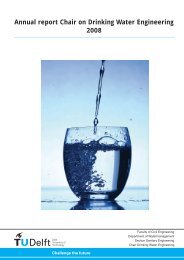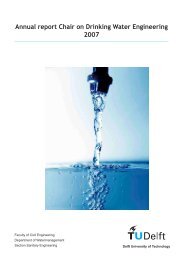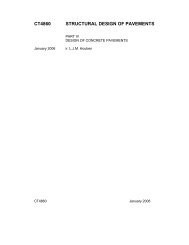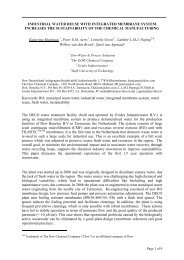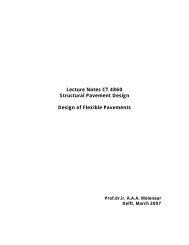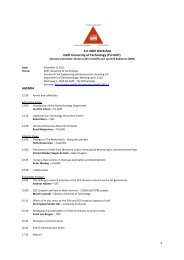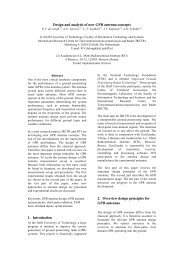CHAPTER 5 CONCRETE PAVEMENTS - TU Delft
CHAPTER 5 CONCRETE PAVEMENTS - TU Delft
CHAPTER 5 CONCRETE PAVEMENTS - TU Delft
Create successful ePaper yourself
Turn your PDF publications into a flip-book with our unique Google optimized e-Paper software.
Subgrade k0 (N/mm 3 )<br />
Well graded gravel and gravel/sand-mixtures, hardly any fine material<br />
Poor graded gravel, hardly any fine material<br />
Gravel/sand/clay-mixtures<br />
Well graded sand and sand with gravel, hardly any fine material<br />
Poor graded sand, hardly any fine material<br />
Sand/clay-mixtures<br />
Very fine sand, sand with loam<br />
Vast clay<br />
Weak clay and peat<br />
Table 5.2: Rough k0-values for various types of subgrade (2).<br />
0.08 – 0.13<br />
0.08 – 0.13<br />
0.05 – 0.13<br />
0.05 – 0.10<br />
0.04 – 0.10<br />
0.03 – 0.08<br />
0.03 – 0.05<br />
0.01 – 0.03<br />
0.00 – 0.01<br />
When the CBR-value of the subgrade is known, then an indication of the ko-value can<br />
also be obtained by means of figure 5.6.<br />
Figure 5.6: Rough relationship between ko and CBR for various types of subgrade (2)<br />
As already mentioned in paragraph 5.2, generally a sub-base and/or a base are<br />
constructed over the subgrade. The effect of these layers can be estimated by means<br />
of figure 5.7.<br />
The k-value at the top of a layer is found from the k-value at the top of the underlying<br />
layer and the thickness hf (mm) and the dynamic modulus of elasticity Ef (N/mm²)<br />
(table 5.3) of the layer under consideration. This procedure has to be repeated for<br />
each (sub-)base layer, so at the end the ‘modulus of substructure reaction’ k on top<br />
of the substructure, i.e. directly beneath the concrete top layer, is found.<br />
169



